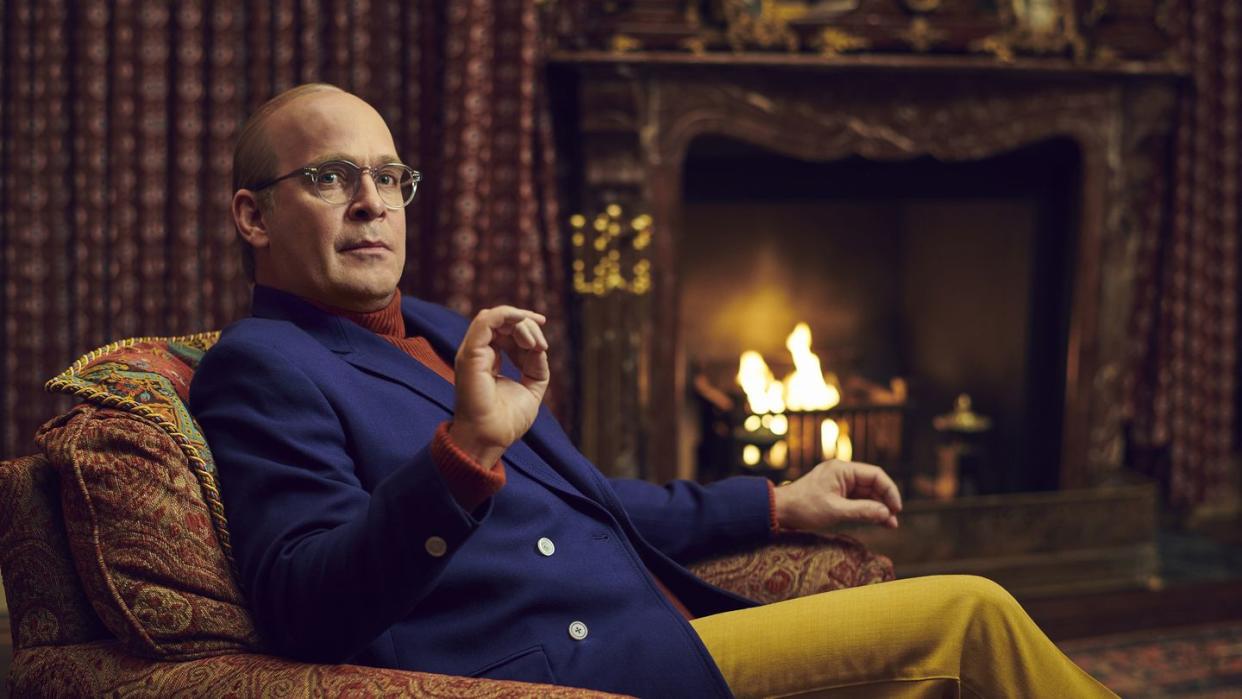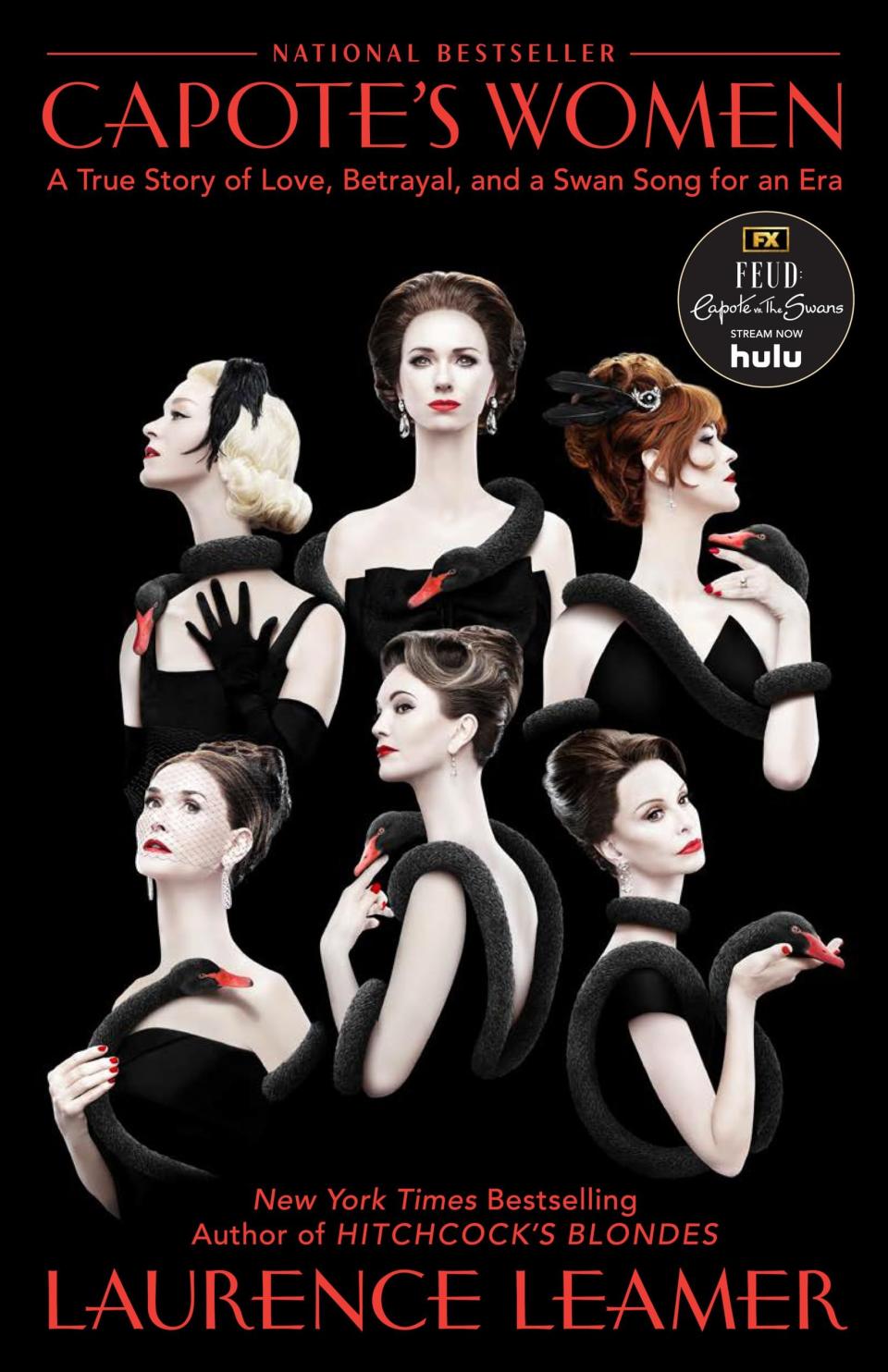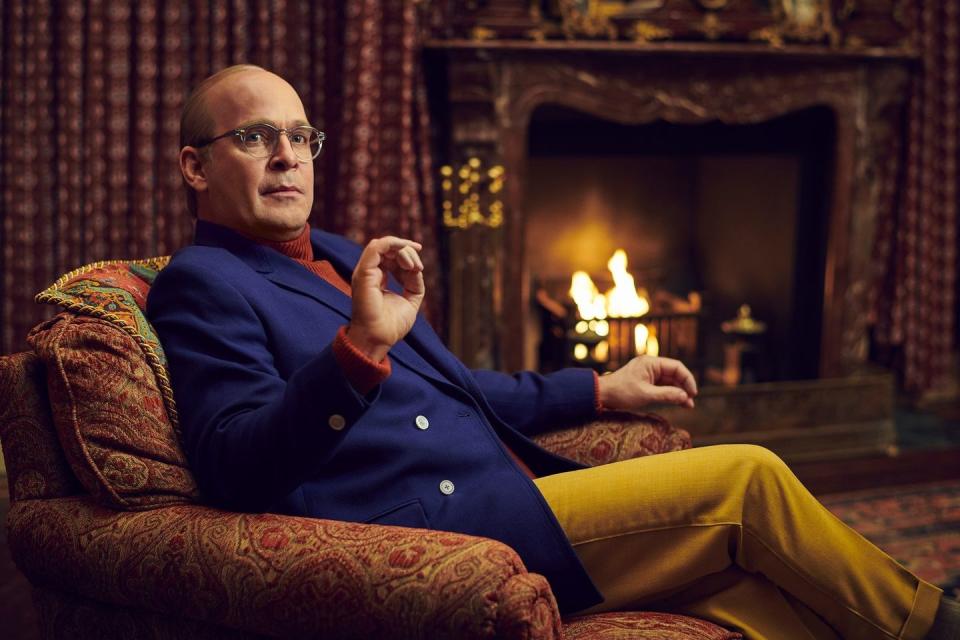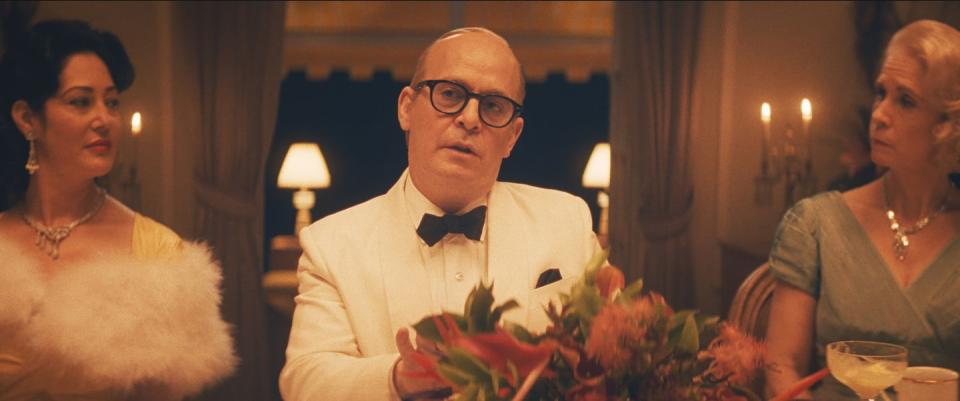“Feud: Capote vs. the Swans” Tells the True Story of Truman Capote’s Downfall

- Oops!Something went wrong.Please try again later.
- Oops!Something went wrong.Please try again later.
- Oops!Something went wrong.Please try again later.
- Oops!Something went wrong.Please try again later.
- Oops!Something went wrong.Please try again later.
"Hearst Magazines and Yahoo may earn commission or revenue on some items through these links."
The first season of Feud covered the tempestuous relationship between Bette Davis and Joan Crawford, giving viewers a glimpse behind the scenes as the Hollywood icons filmed the 1962 picture What Ever Happened to Baby Jane? Now, the FX true-life anthology series is back for a second season, this time exploring the falling-out between author Truman Capote and a group of socialites in his inner circle known as “the Swans.”
The limited series premieres today on FX with the first two of its eight episodes, with a new episode airing each Wednesday through March 13. Episodes will be available to stream the following day on Hulu. While Capote vs. the Swans is sure to take some creative license, here’s what to know about the true story behind season two of Feud.
Capote forged friendships with New York royalty

Capote’s Women: A True Story of Love, Betrayal, and a Swan Song for an Era
amazon.com
$12.99
Feud: Capote vs. the Swans is based on the book Capote’s Women: A True Story of Love, Betrayal, and a Swan Song for an Era, by Laurence Leamer, which explores the events that led to the celebrity author’s downfall. Following the success of his 1958 novella Breakfast at Tiffany’s, Capote was riding high. As Biography notes, he became a favorite on the New York social scene, particularly of socialites like Barbara “Babe” Paley, Lee Radziwill, Gloria Guinness, C.Z. Guest, and Slim Keith—members of the group dubbed the Swans.
Capote was keen to start his new project after Breakfast at Tiffany’s, a novel titled Answered Prayers, but instead found himself writing about the Clutters, a family of four murdered in rural Kansas in 1959, after traveling to the crime scene with a friend, Harper Lee (who would soon after publish her own classic novel, To Kill a Mockingbird). Capote’s writing on the subject would culminate in the publication of his 1966 “nonfiction novel” In Cold Blood, which would heavily influence the development of the true-crime genre.
In a demonstration of his immense influence over New York society at the height of his fame, Capote held the famed Black and White Ball at the Plaza hotel on November 28, 1966. As The New York Times notes, the Swans were among the 540 attendees, along with celebrities like Andy Warhol, Frank Sinatra, and Mia Farrow, and royalty from around the globe—all of whom wore masks, per the party’s strict masquerade theme. Of Capote’s ability to bring together icons from a multitude of industries, a source told the Times wrote: “Truman created this new class of talented, good-natured, funny people, and that lasted for quite a long time.” His popularity would not last forever, however.
While In Cold Blood cemented Capote as a literary talent, his continued work on the unfinished Answered Prayers would lead to the conflict on which the second season of Feud is based.
Capote spilled too many secrets
In 1975, Capote published his short story “La Côte Basque 1965,” an excerpt from his long-awaited follow-up to In Cold Blood, in Esquire. At the time, he had long since missed the original 1968 deadline he’d been given by Random House, which, Town & Country says, had paid him a $25,000 advance for Answered Prayers. “La Côte Basque 1965” immediately sparked controversy, as its characters bore a bit too much of a resemblance to some of Capote’s closest friends, whose indiscretions were detailed in the text. The story takes place in a high-end restaurant and sees a socialite share a slew of sordid gossip—much of which was very much grounded in reality—with her companion.
The Swans were reportedly outraged that Capote would mine their lives for his work. As for Capote’s reaction, Town & Country quotes writer Dotson Rader, who said of the debacle: “I think he was surprised [by the reaction], but his attitude was, What did they expect? … It just astonished me; you think he’d murdered somebody.” Capote’s biographer and friend, Gerald Clarke, told Vanity Fair he expressed concerns to the author that the socialites would recognize themselves in “La Côte Basque 1965.” “He said, ‘Nah, they’re too dumb. They won’t know who they are,’” Clarke said. “He could not have been more wrong.”

Capote was instantly cut off by most of the Swans after Esquire published the story. “Everyone turned on him, he was a persona non grata,” writer Kelleigh Greenberg-Jephcott, whose novel Swan Song is based on the socialites’ story, told Penguin. The Swan who was Capote’s closest friend, Babe Paley, apparently didn’t speak to him ever again, and he was not invited to her funeral when she died in 1978. According to Biography, Slim Keith considered suing the author for libel, while Ann Woodward died of a suspected suicide prior to the story’s publication, the presumption being that she had read an advance copy.
Capote’s life became consumed by drugs and alcohol
Capote released two more chapters from the Answered Prayers manuscript, “Unspoiled Monsters” and “Kate McCloud,” but the complete book never materialized. After being ostracized by his closest friends, the author turned to drink and drugs to occupy his time, Penguin says. He spent much of his time at nightclub Studio 54, and despite an intervention by his friend C.Z. Guest, his attempts at rehab were unsuccessful.
His substance abuse had a devastating effect on Capote’s health, and the writer experienced collapses and seizures, PBS says. He died August 25, 1984, at the age of 59. Entertainment Weekly notes that at the time, he was staying with friend Joanne Carson in Bel Air, Los Angeles. The cause of death was listed as “liver disease complicated by phlebitis and multiple drug intoxication,” PBS says; Entertainment Weekly reports that Capote died of an overdose caused by Valium, codeine, and barbiturates.
The Swans were the “original Real Housewives”
Speaking to Town & Country, Feud co-creator Ryan Murphy described the Swans: “They were like the original Real Housewives … That’s something now that people are obsessed with.” Gossip columnist and publicist R. Couri Hay, who worked for Andy Warhol, told the publication that the way Capote exploited his friends had a lot in common with the reality-TV mega-franchise. “Truman’s story showed you the innermost secrets of a group of people who were idolized,” Hay said. “It wasn’t reality TV, it was reality.”

To re-create the glamor of New York society in the 1970s, Feud: Capote vs. the Swans enlists some of Hollywood’s most iconic stars. Naomi Watts takes on the role of Babe Paley, wife of CBS founder William S. Paley (played by Treat Williams) and an extremely close friend of Capote’s. Chloë Sevigny stars as Warhol muse C. Z. Guest, Calista Flockhart portrays first lady Jackie Kennedy’s younger sister, Lee Radziwill. Molly Ringwald plays Joanne Carson (late-night TV legend Johnny Carson’s second wife), and Demi Moore portrays Ann Woodward, famously known as the widow of banking heir Billy Woodward. Diane Lane completes the cast as Slim Keith, who discovered Lauren Bacall, bringing the future star to the attention of her director husband, Howard Hawks.
It’s unsurprising that Capote’s dramatic falling-out with a group of high society’s most respected women forms the basis of Feud’s second season. As Murphy noted in his interview with Town & Country: “A feud is never about hatred; a feud is about pain, always. For the show to work, there had to be a great split that was about heartache as opposed to hatred.”
You Might Also Like

